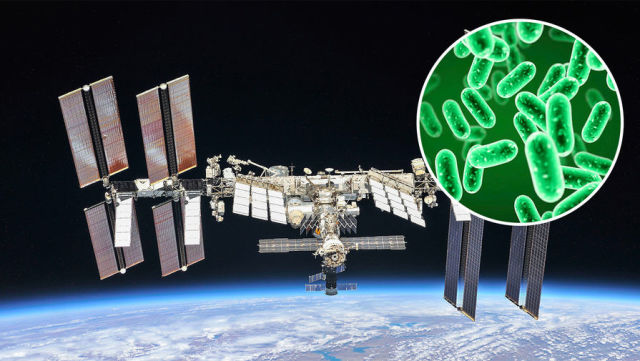Scientists investigated unknown bacteria from the ISS
American scientists have identified three strains of bacteria unknown to science in samples from the ISS. They were related to bacteria that are important for plant growth. The researchers hope that in the future, these strains can be used to grow food on long-term space flights.
NASA, in collaboration with the University of Southern California and other research centers, discovered four strains of bacteria on the ISS, and three of them were unknown to science. Read more about this in an article in the journal Frontiers in Microbiology.
Three strains were isolated in 2015-2016. One-on the upper panels of the research stations, the second-in the Dome, one of the ISS modules, the third - on the surface of the dining table. The fourth ended up in an old air purification filter that returned to Earth in 2011.
Astronauts aboard the ISS have been growing food for years, so it's no surprise that these bacteria ended up on board, the researchers note.
One of the strains (the one that was in the filter) was known - it was the bacterium Methylorubrum rhodesianum. The other three strains belonged to the same, previously unknown species. The researchers named them IF7SW-B2T, IIF1SW-B5, and IIF4SW-B5.
Experts from the University of Southern California proposed to name a new species of Methylobacterium ajmalii in honor of Ajmal Khan, a well-known Indian scientist in the field of biodiversity. The new species was related to the already known one, Methylobacterium indicum.
"To grow plants in extreme conditions, with minimal resources, it is necessary to isolate new microbes that help stimulate plant growth," said study co - authors Kasthuri Venkateswaran and Nitin Kumar Singh.
Given that the bacteria were able to survive in the harsh conditions of the ISS, the team conducted a genetic analysis of the strains to find genes that could help stimulate plant growth.
"The complete set of genomic sequences of these three strains, which we present, will allow us to compare the isolates from the ISS with their terrestrial counterparts in future studies," the scientists write. "This will help identify the genetic determinants that could potentially be responsible for stimulating plant growth in microgravity, and contribute to the development of self-sufficient plants for long-term space missions in the future."
Further research is needed - the authors note that they have barely touched the microbial diversity on the ISS. In total, the station managed to collect about 1,000 samples of microbes, but they are still waiting to be sent to Earth.
"In the conditions of long - term space flight, including future interplanetary expeditions, it is important to carry out operational microbiological control of the interior surfaces and equipment," the specialists of the Russian Institute of Biomedical Problems explained in the report.
For these tasks, the scientific equipment E-Nose was developed, which is able to capture the volatile products of the metabolism of microorganisms and allows you to determine the quantitative level of bacteria and microscopic fungi on surfaces, without sending samples to the Ground.
"The device reliably showed the presence or absence of microflora on the samples of materials and interior surfaces of the ISS, and in the case of the presence of the types of microorganisms included in its database, correctly determined their taxonomic affiliation," the report notes.
Alla Salkova

